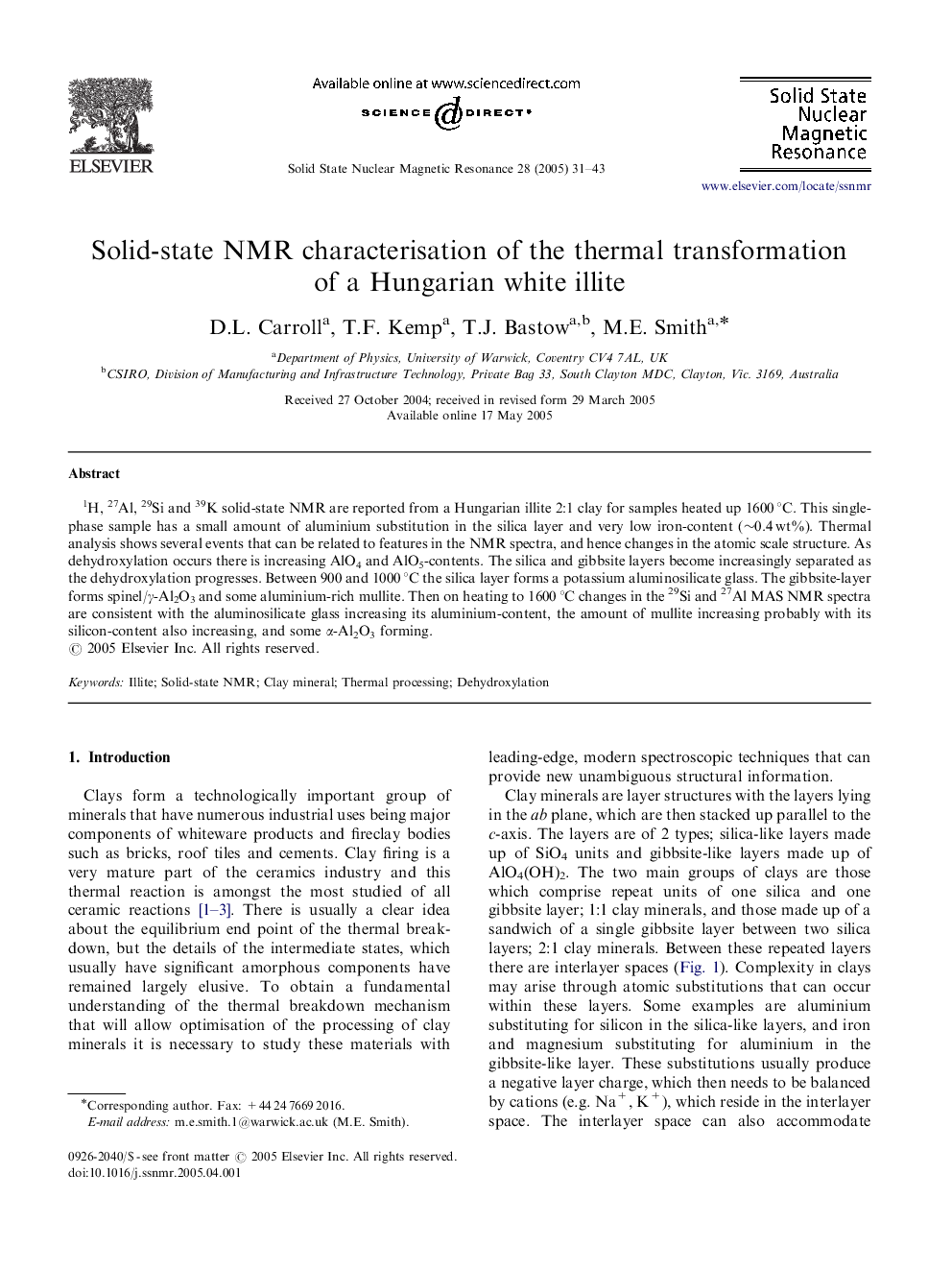| Article ID | Journal | Published Year | Pages | File Type |
|---|---|---|---|---|
| 9594252 | Solid State Nuclear Magnetic Resonance | 2005 | 13 Pages |
Abstract
1H, 27Al, 29Si and 39K solid-state NMR are reported from a Hungarian illite 2:1 clay for samples heated up 1600 °C. This single-phase sample has a small amount of aluminium substitution in the silica layer and very low iron-content (â¼0.4 wt%). Thermal analysis shows several events that can be related to features in the NMR spectra, and hence changes in the atomic scale structure. As dehydroxylation occurs there is increasing AlO4 and AlO5-contents. The silica and gibbsite layers become increasingly separated as the dehydroxylation progresses. Between 900 and 1000 °C the silica layer forms a potassium aluminosilicate glass. The gibbsite-layer forms spinel/γ-Al2O3 and some aluminium-rich mullite. Then on heating to 1600 °C changes in the 29Si and 27Al MAS NMR spectra are consistent with the aluminosilicate glass increasing its aluminium-content, the amount of mullite increasing probably with its silicon-content also increasing, and some α-Al2O3 forming.
Related Topics
Physical Sciences and Engineering
Chemistry
Physical and Theoretical Chemistry
Authors
D.L. Carroll, T.F. Kemp, T.J. Bastow, M.E. Smith,
